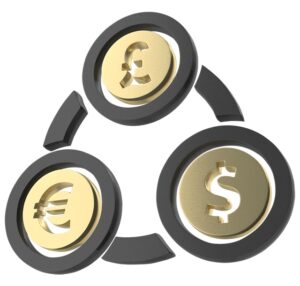What is a Spread in Forex?
Spread is often overlooked, yet a critical aspect of your trading costs, and especially the profitability of day traders or short-term traders.
The Spread is the difference between the bid price (what buyers will pay) and the ask price (what sellers are asking). A Forex (Foreign exchange market or FX market) spread is typically expressed in pips, which is short for “Percentage in point” or “Price interest point,” and it represents the smallest price move that a currency pair can make. Calculating the spread accurately can make a difference in your Forex trading strategy, and by learning to calculate it effectively, you’ll gain a keen edge over those who overlook its significance.
How to calculate the spread
First, identify the bid and ask prices for your chosen currency pair. For instance, if you’re looking at the EUR/USD pair, you might see a bid price of 1.1750 and an ask price of 1.1755.
Next, subtract the bid price from the ask price. Using our EUR/USD example: 1.1755 (ask) – 1.1750 (bid) = 0.0005.
The result is the spread. In our case, it’s 0.0005 or 5 pips.
Variable vs fixed spreads
It’s important to remember that spreads can be variable or fixed, depending on your broker’s policy and overall market conditions.
Variable spreads fluctuate with market liquidity, while fixed spreads remain constant regardless of market changes.
- Familiarise yourself with your broker’s spread policy for more predictable trading costs; and
- Keep track of market liquidity to anticipate changes in variable spreads.
What can affect the spread size?
The Currency pair you trade
Exotic pairs, while potentially lucrative due to high volatility, usually come with higher spreads and, thus, higher costs.
- Choose currency pairs with lower spreads for cost-effective trades.
- Consider liquidity and spread size when selecting currency pairs.
The Forex broker you use
Remember that your Foreign exchange broker plays a pivotal role in your trading experience. Different brokers offer different spreads, so it’s essential to compare these offers as part of your broker selection process.
- Assess various brokers’ spreads before committing to one.
- Factor in spreads when calculating potential profits and losses.
Economic news releases
An important aspect that impacts spreads is current events or economic news releases that impact foreign currency – times when markets become volatile. Spreads can widen substantially during these moments, such as an interest rate announcement as brokers aim to mitigate risk.
- Use Forex economic calendars to stay informed and plan around high-impact news releases.
- Use market volatility knowledgeably by anticipating changes in spread behaviour.
Trading session times
Considering trading times can also help you optimise for better spreads. For example, trading during peak hours when two major markets overlap may result in tighter spreads due to increased liquidity.
- Leverage peak trading hours for potentially lower spread costs.
- Be aware of trading session schedules to align with optimal spread conditions.
Summing up
Calculating the spread in Forex is a fundamental skill for any trader looking to minimise costs and maximise gains. It’s about understanding market mechanics and using them to make informed strategic decisions.
Understanding how Forex spreads work, alongside other essential trading knowledge such as risk management, trading psychology and technical analysis, will help you make better Forex trading decisions.


